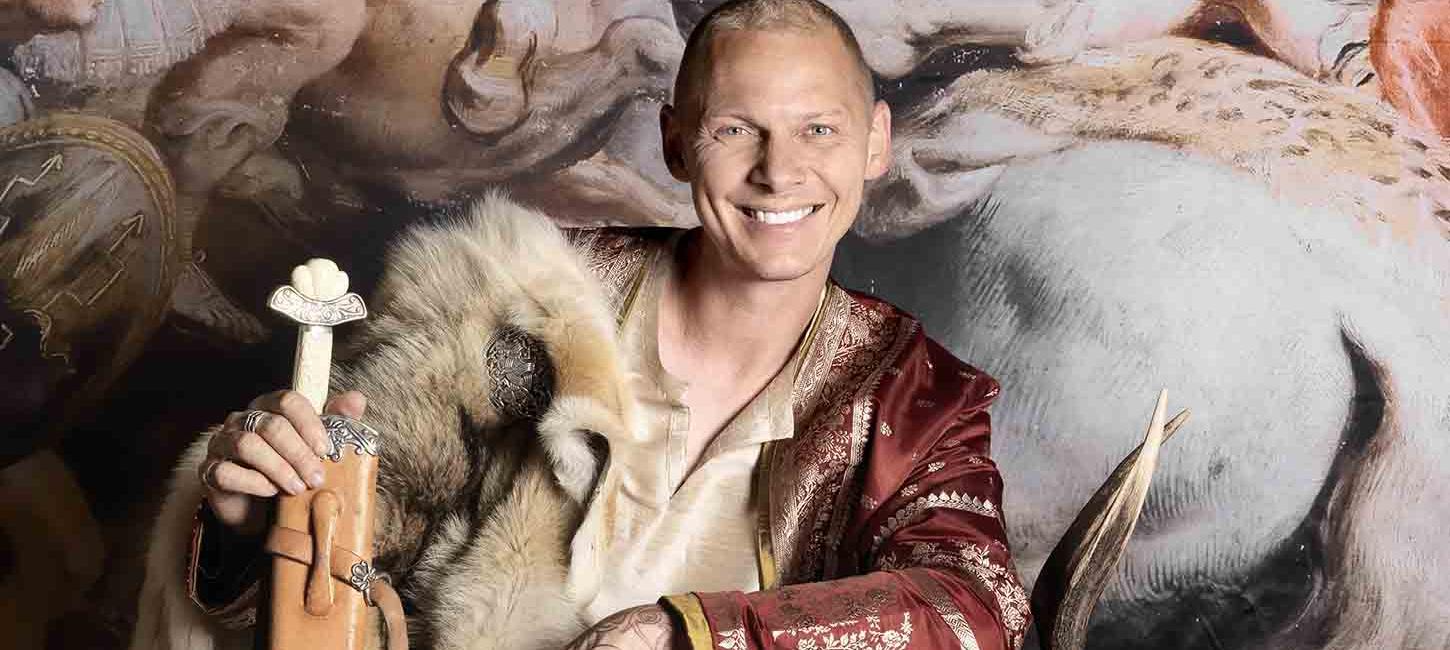
Bogense is the home of the gods
See excerpts and stories about all Jim Lyngvild's photos from the exhibition Bogense is the home of the gods at Østre Mole in Bogense🖼📷
Bogense is the home of the gods, especially if one is to believe the historians from the 18th century. Here, it is believed that the name of the town comes from Odin's son, Bo, whom he had with the Russian princess Rind. He was supposed to avenge Balder at Ragnarok. Therefore, other – slightly more colorful sources from this time – also believe that it is from the wetlands of Bogense, Gyldensteen, or Harridslevgaard, that Balder's funeral pyre, Ringhorne, was sent off and dispatched to Hel. Looking at names, it could be the area near Nærå Beach, as this means “The beach of the God Njord.”
Whether there is any truth to these stories, we will leave up to the imagination. But the fact is that there are plenty of references to Nordic gods in place names and finds along the entire North Funen coast, so perhaps the gods are pleased to be welcomed back by Jim Lyngvild and the town of Bogense.
The owners' association at Østre Mole is the organizer of the exhibition.
Jim Lyngvild
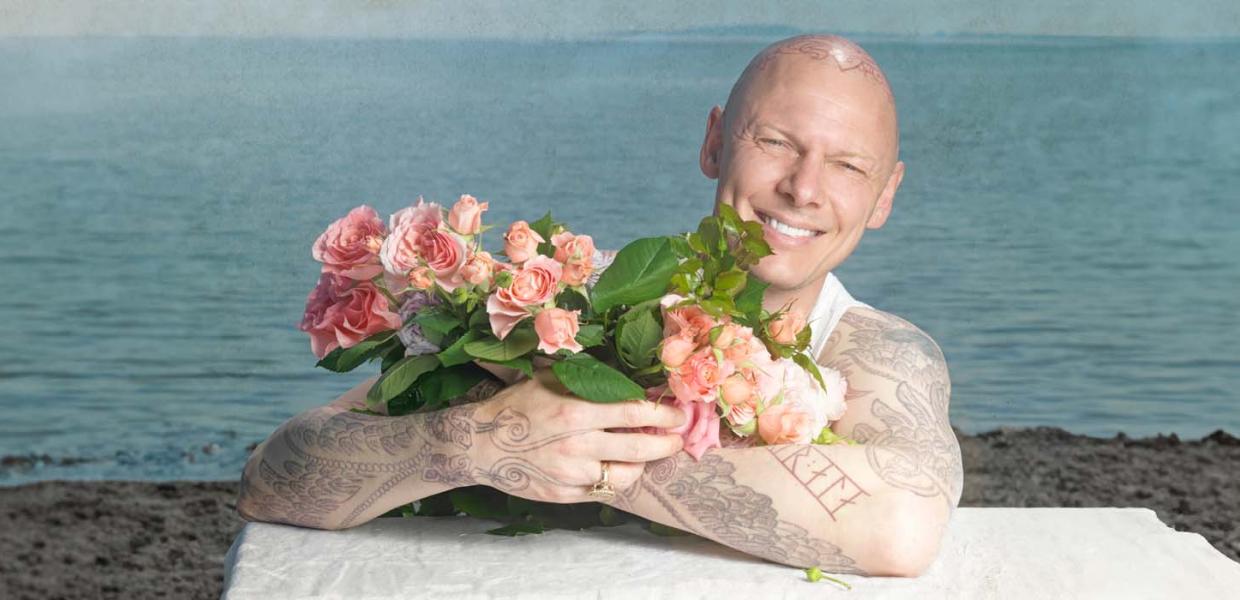
Photo:Jim Lyngvild
Jim Lyngvild is a storyteller, designer, entrepreneur and photographer - a Danish multi-artist known for his work in fashion, design, art and writing. Jim Lyngvild is particularly known for his spectacular costumes and his great interest and knowledge of the Viking Age and Norse mythology. He has a colourful personality and has designed a number of amazing Viking costumes and has been involved in several TV programmes and exhibitions focusing on the Viking Age and Danish history.
In addition to his work with costumes and fashion, Jim Lyngvild is also the author of several books on topics such as fashion, Vikings, Nordic mythology and Danish cultural history. In 2023, he published a book about roses. Jim's interest in roses grew when in 2019 he was guest of honour at the Nordfyn Rose Festival in Bogense and "recognized" (named) his own rose - the so-called Jim the Viking rose is bred by the world's only female rose breeder Rosa Eskelund.
Pictures from the exhibition
See sections of the images from the exhibition and the good stories about the images.
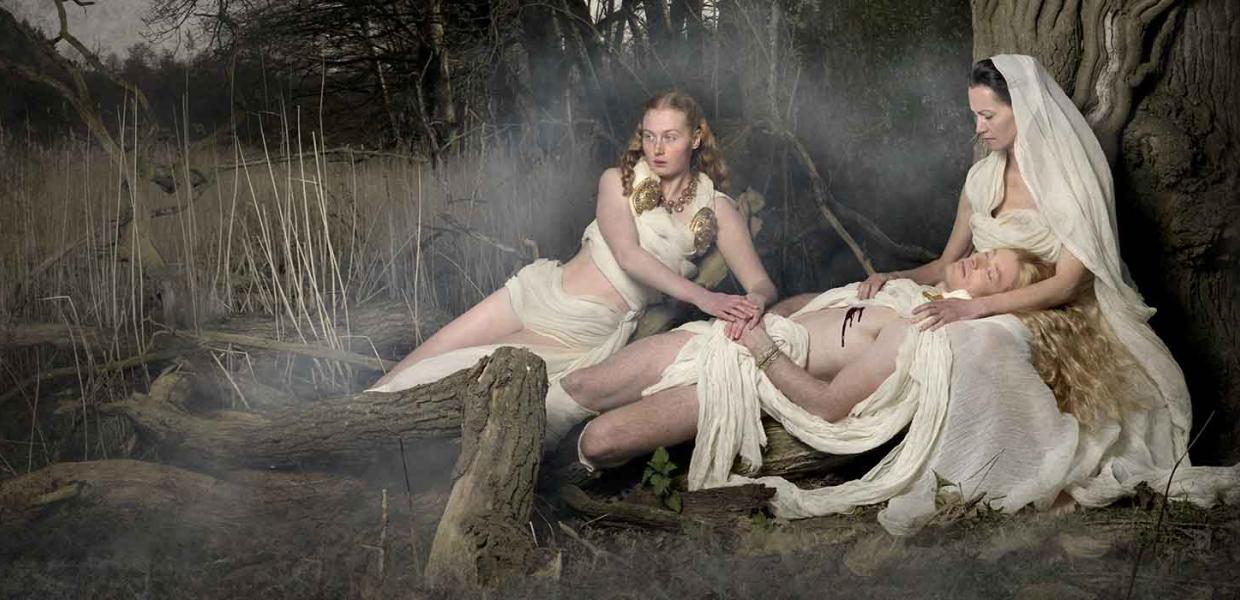
©Jim LyngvildPhoto:Jim Lyngvild
Balder's Death
The god Balder was hit by an arrow made from mistletoe. It was Loki who acted as the intermediary, but it was Balder's blind brother, Hodr, who placed the arrow on the bow. However, Balder is to return after Ragnarok and start the new world of gods. Here he is with his wife Nanna and his mother, Frigg.
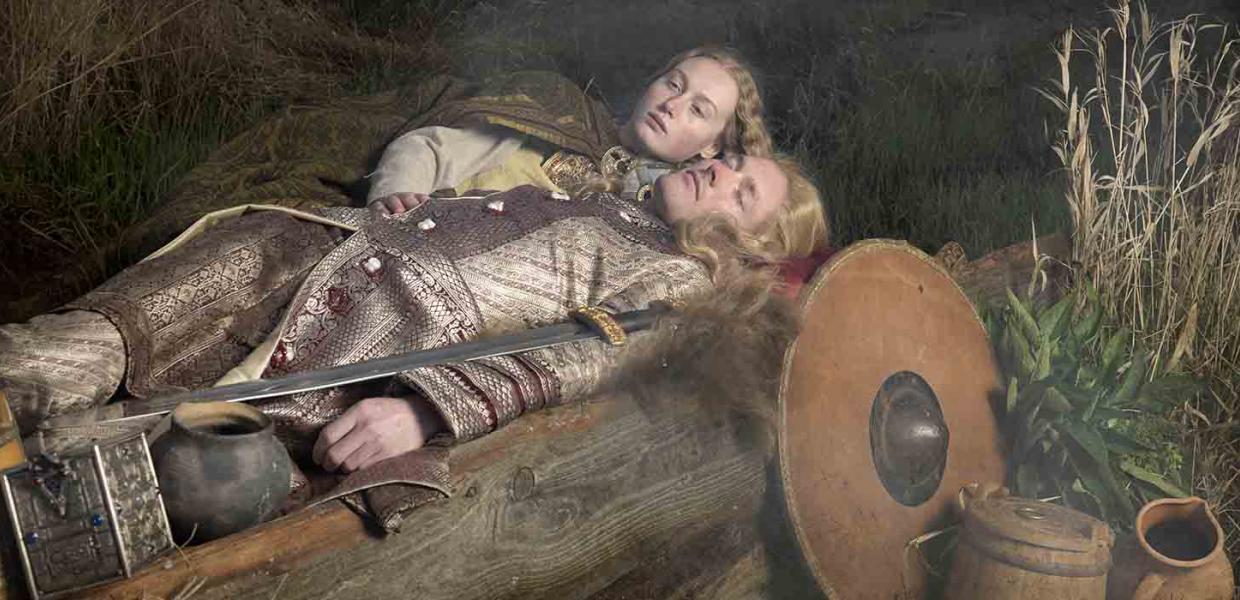
©Jim LyngvildPhoto:Jim Lyngvild
Balder's Death 2
Balder was placed on his funeral ship Ringhorne – which, according to some traditions, may have set sail from the coast of Bogense. On the ship, he received Odin's ring, Draupnir, and his wife Nanna was so stricken with grief that she fell dead on the spot.
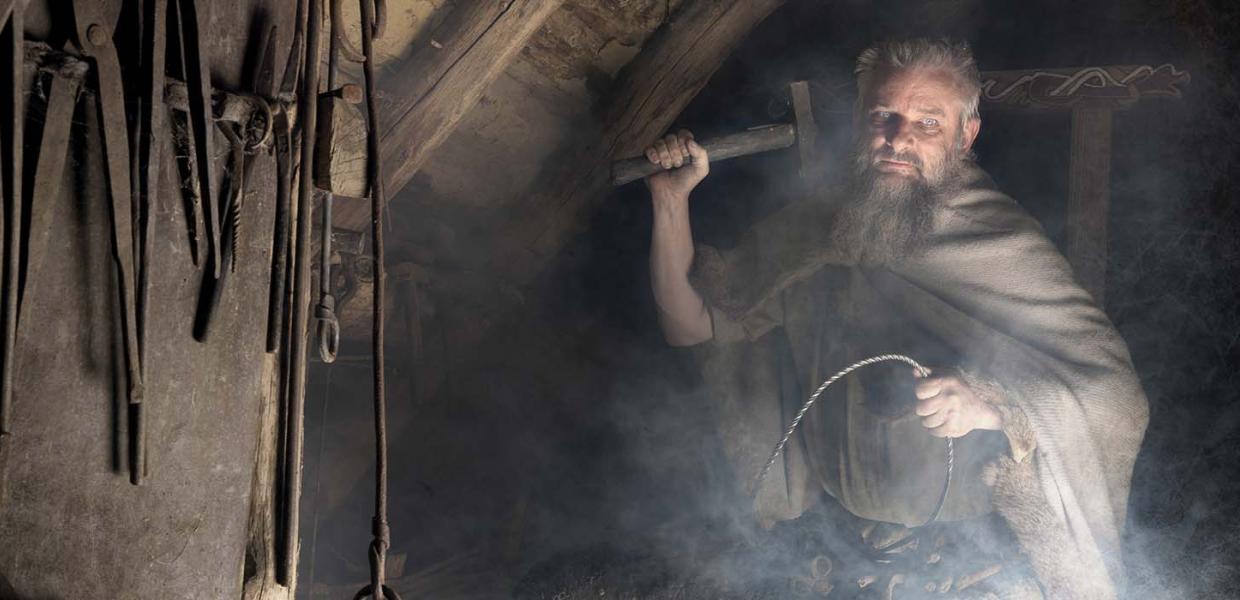
©Jim LyngvildPhoto:Jim Lyngvild
Dwarf
There are plenty of stories about dwarves in the area surrounding Bogense. The area around Harridslevgaard is particularly full of tales about dwarves in mounds, creating gold and other precious gifts.
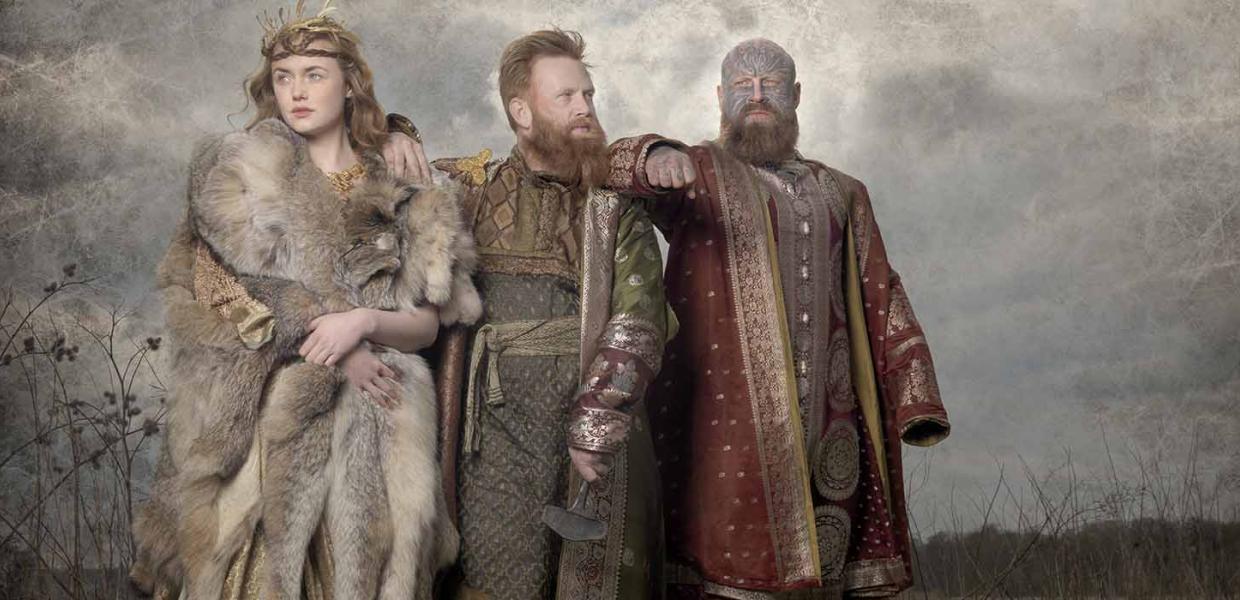
©Jim LyngvildPhoto:Jim Lyngvild
Freja, Thor, and Tyr
Three of the main gods of the Norsemen, Freja, Thor, and Tyr, are here gathered in a "family photo". Freja is of the Vanir clan, an older lineage than the Aesir, to which Thor belongs, and Tyr is said to be of Jötunn lineage, but is one of the oldest gods, and was originally called Tiwas. Lake Tissø in Zealand is named after him.
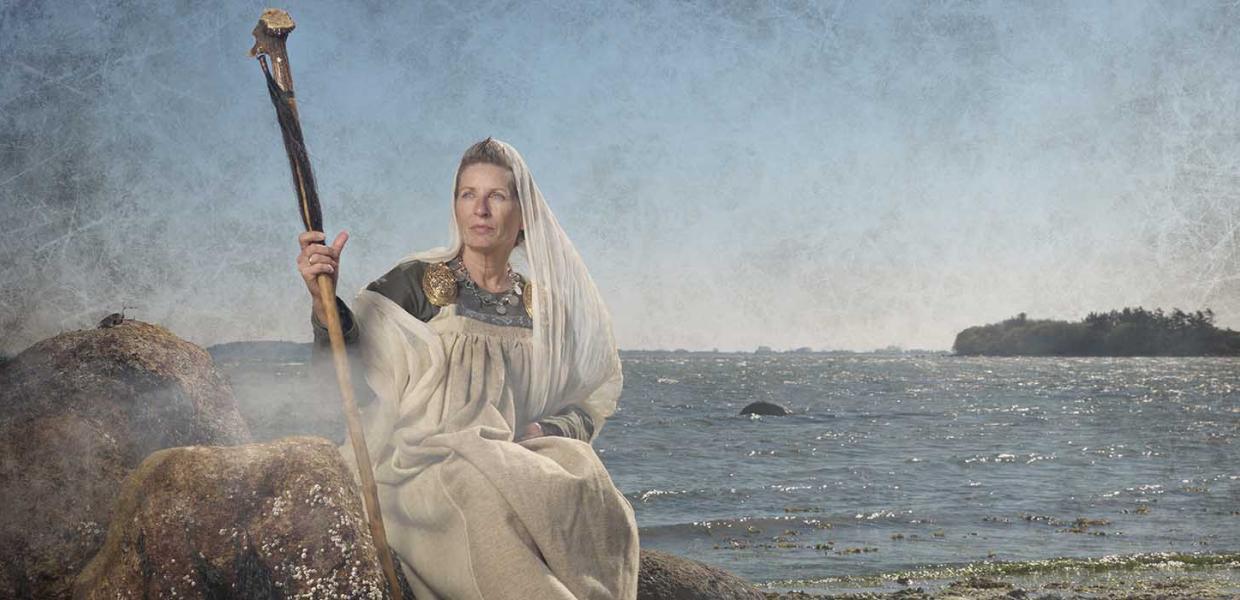
©Jim LyngvildPhoto:Jim Lyngvild
Frigg
The elder Frigg, sitting on the beach, longing for her favorite son, Balder. She asked everything in the world to weep for Balder to free him from Hel's underworld, but the old woman, Tøgg, refused (it was Loki in disguise).
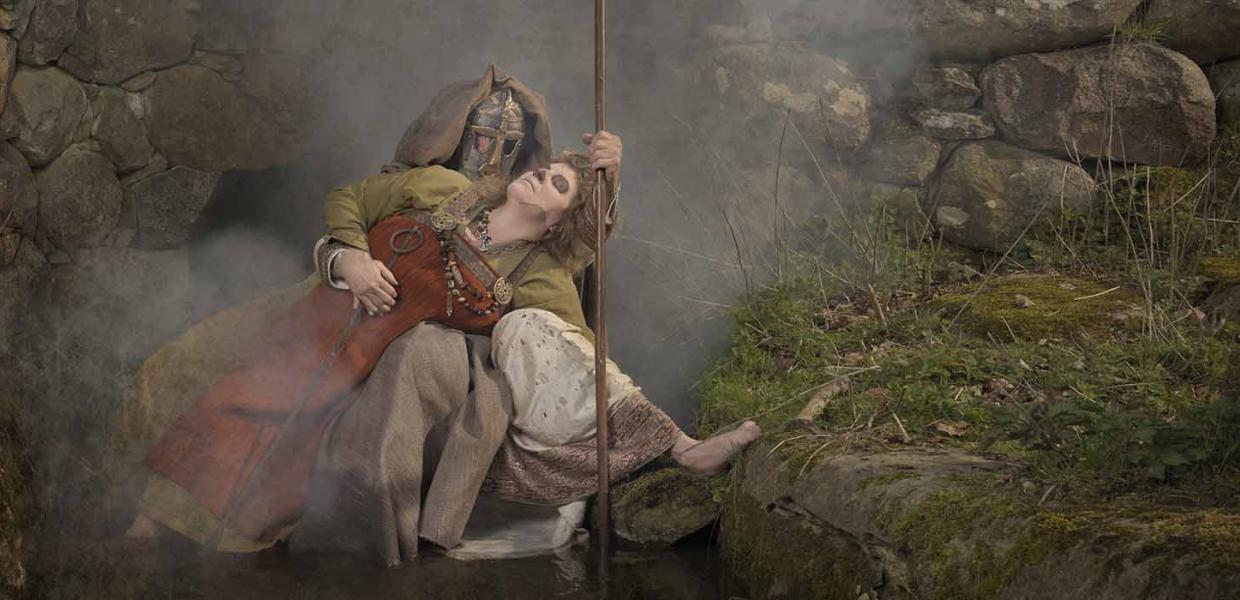
©Jim LyngvildPhoto:Jim Lyngvild
Groa
The seeress Groa and Odin. Once, Odin awakened a seeress to learn more about Balder's death, but the seeress was grumpy. She lay outside Hel's gates, and Odin had traveled to the underworld to ask a mortal, and deceased, seeress for advice. However, she would only give half answers.
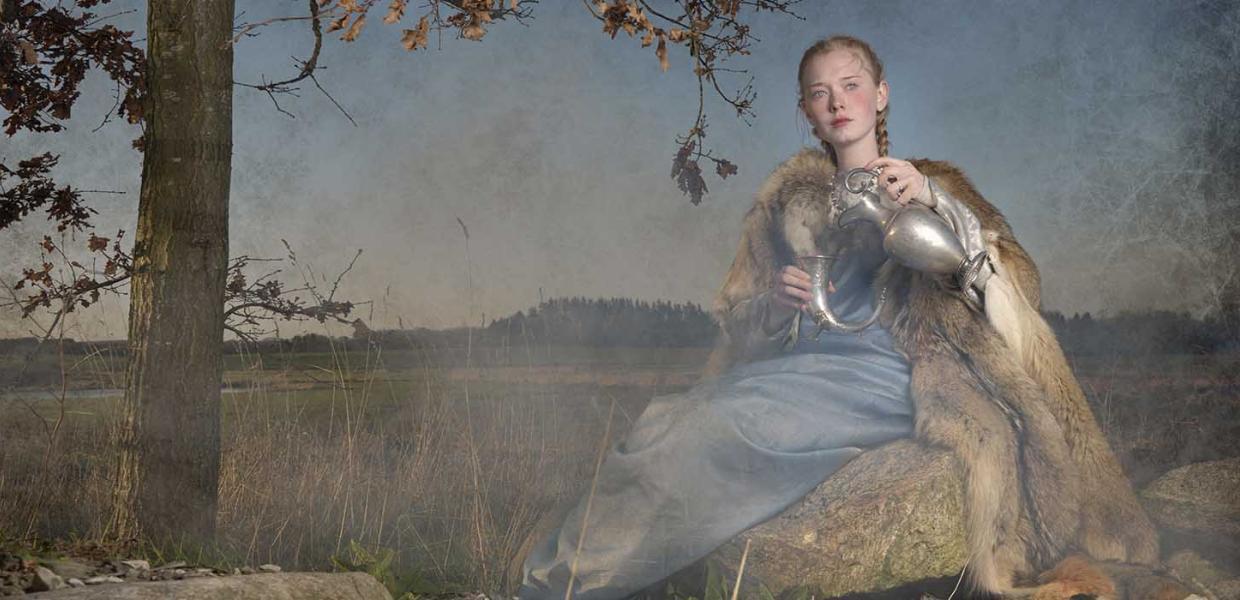
©Jim LyngvildPhoto:Jim Lyngvild
Gunlød
The beautiful Gunlød, whom Odin seduced. He transformed himself into a snake to enter the mountain Nit. There, Gunlød guarded the mead of poetry, which can make anyone a skald, but with cunning and caresses, he coaxed the mead from the noble maiden – who was no longer a maiden after that encounter.
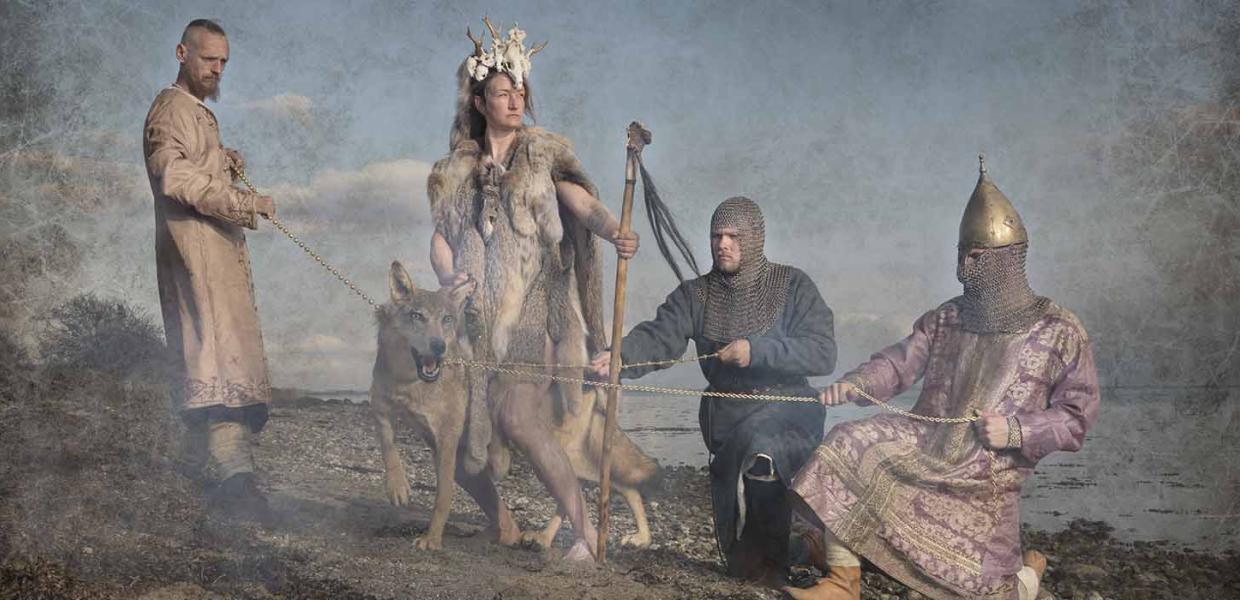
©Jim LyngvildPhoto:Jim Lyngvild
Hyrrokkin on the beach
When Balder's funeral ship could not be pulled free and out to sea, and even Thor had to admit defeat, they sent for the giantess Hyrrokkin. Several strong warriors were needed to keep her wolf at bay.
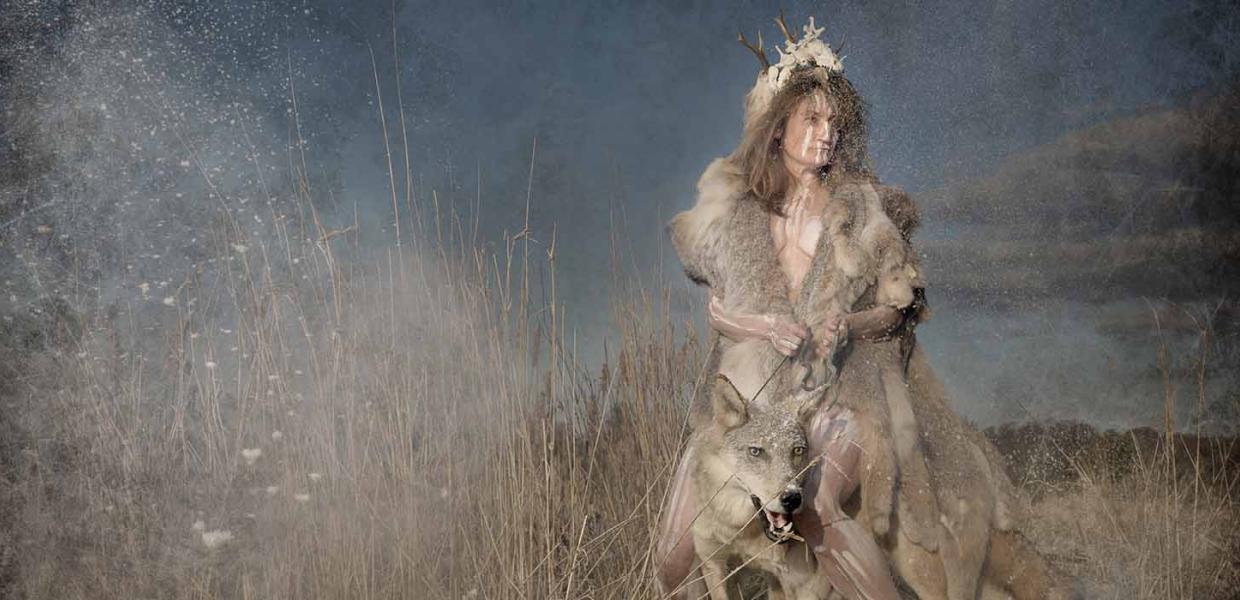
©Jim LyngvildPhoto:Jim Lyngvild
Hyrrokkin
The jötunn giantess Hyrrokkin arrives on her wolf. She uses adders as reins, and she is so strong that even the gods must yield. Perhaps Hyrrokkin is a kenning (a circumlocution) for fire, which can overcome everything.
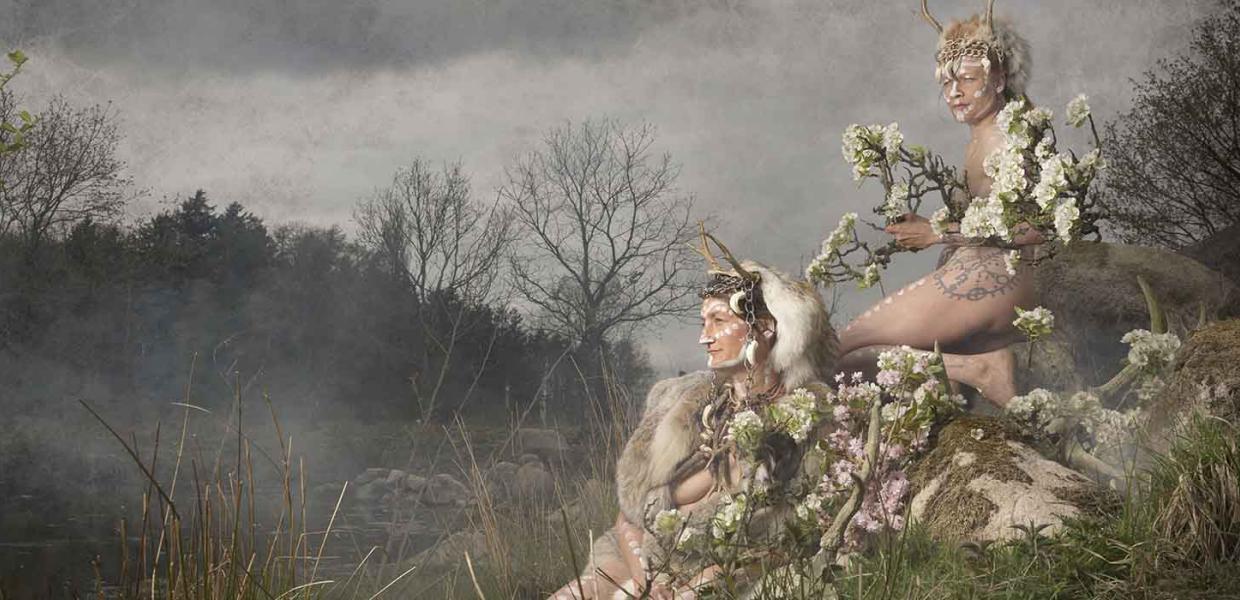
©Jim LyngvildPhoto:Jim Lyngvild
Jötunn Women
As ugly and troll-like as the jötnar can appear, jötunn women can be just as beautiful. Here are seen two lovely maidens in spring attire with apple blossoms and voluptuous forms.
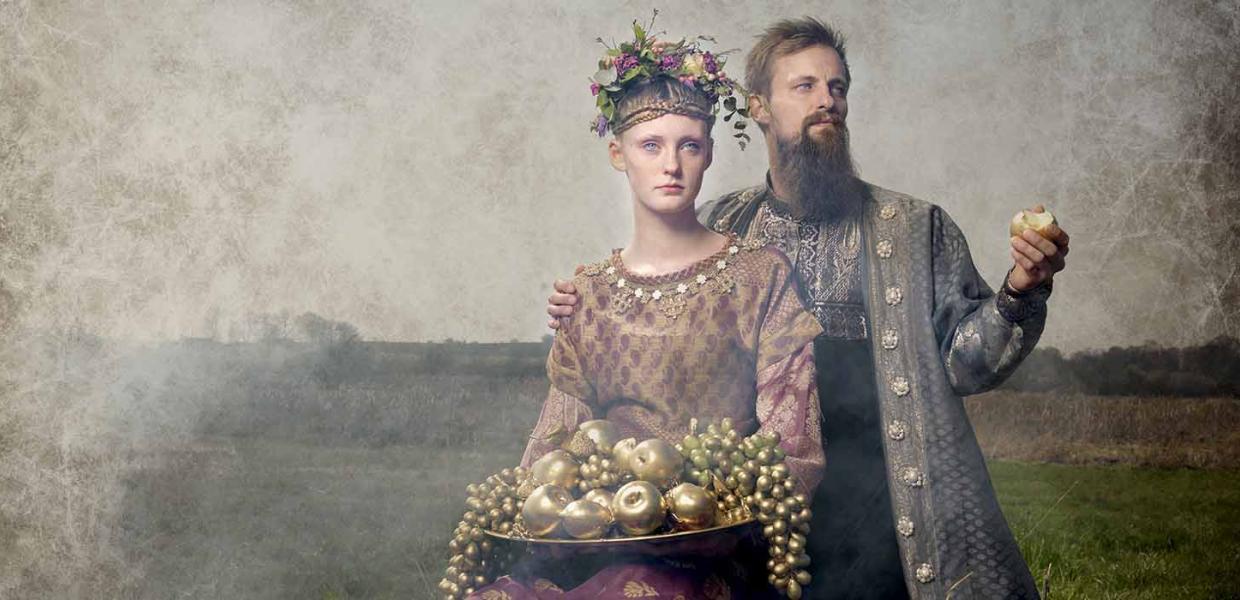
©Jim LyngvildPhoto:Jim Lyngvild
Loke og Idun
Engang lokkede den listige Loke gudinden Idun i baghold og bortførte hende til jætternes verden. Mens hun var væk, havde guderne ikke deres ungdomsæbler og blev gamle og grå. Først da Idun og æblerne blev løsladt, genvandt guderne deres styrke.
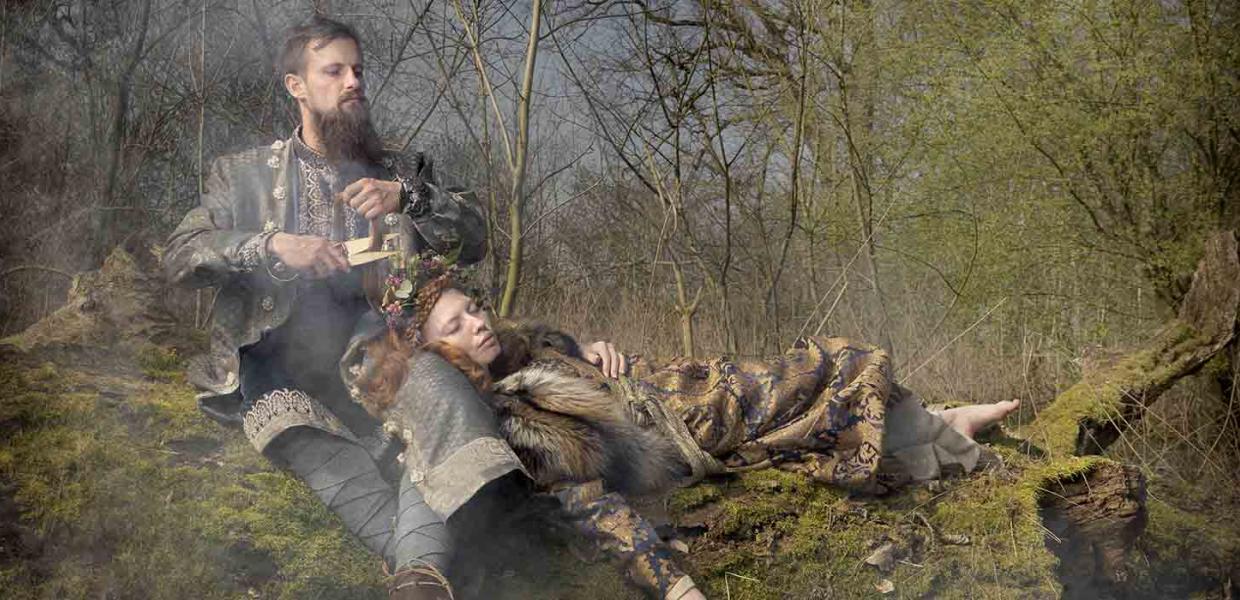
©Jim LyngvildPhoto:Jim Lyngvild
Loki and Sif
Once, when Loki and Sif were home alone, Loki cut off all of Sif's hair while she slept. Thor was so furious when he found out that he threatened to kill Loki unless he promised to make amends. Loki then had the dwarves create a real head of golden hair for Sif.
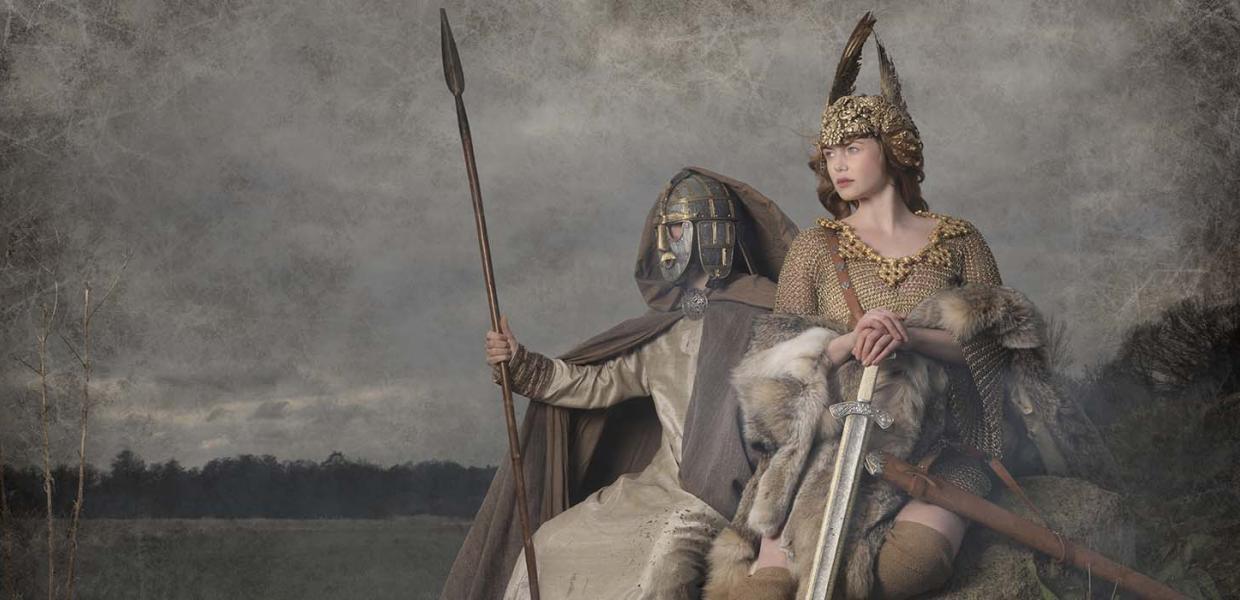
©Jim LyngvildPhoto:Jim Lyngvild
Odin and Freya
Odin is both the king of the gods and the god of death, just like Freya, who is also the goddess of both love and death. When warriors fight on the battlefield and die, Freya and Odin divide them equally among themselves. One half goes to Valhalla, the other to Freya's home, Fólkvangr.
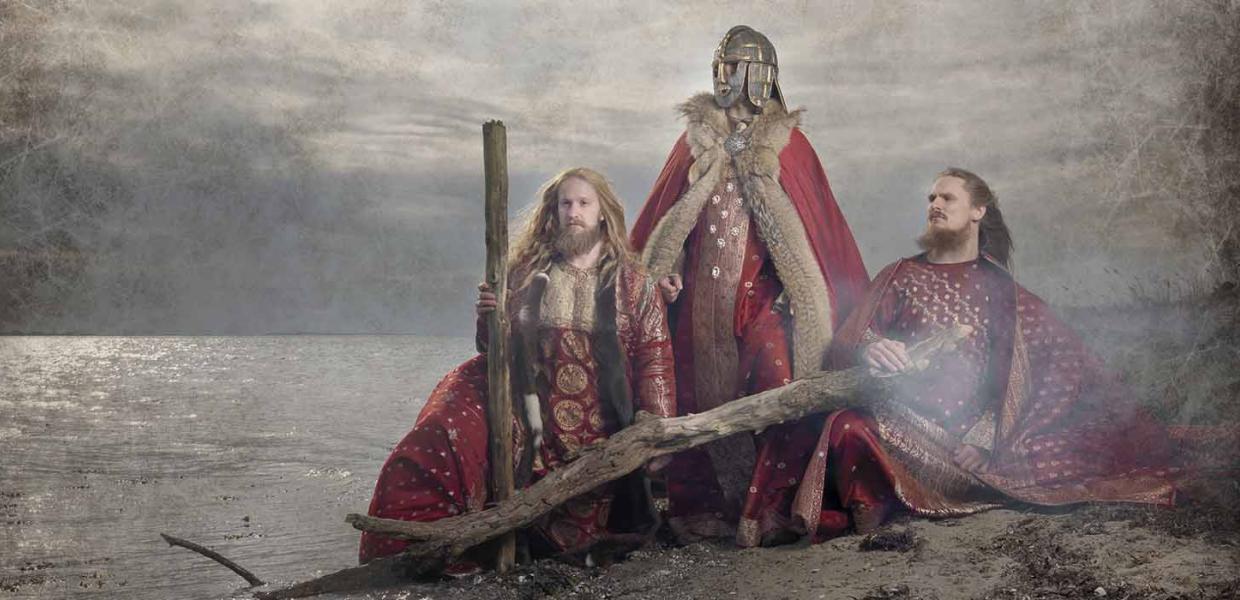
©Jim LyngvildPhoto:Jim Lyngvild
Odin, Vili, and Vé
Once upon a time, in the ancient past, when Odin, Vili, and Ve walked along the beach, they found two pieces of wood. They gave them sense and life and named them Ask and Embla. They became the forefather and mother of all humans.
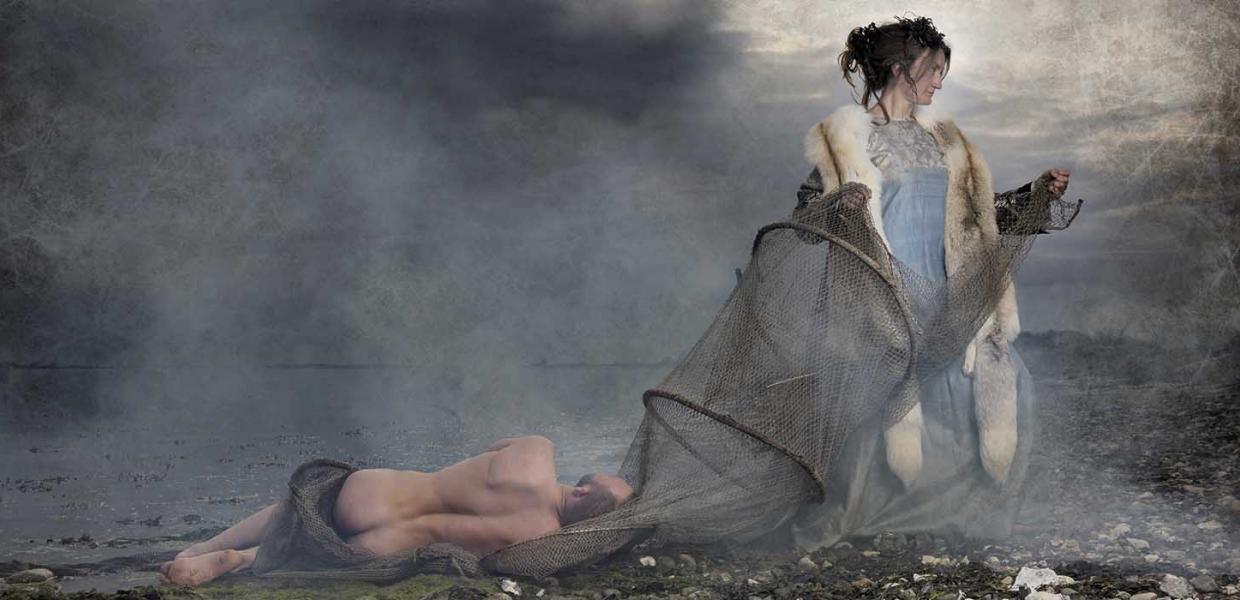
©Jim LyngvildPhoto:Jim Lyngvild
Ran
The goddess Ran is one of the oldest goddesses. She is married to Ægir, who is the god of the sea. Ran is the goddess of the wild sea that can kill, and therefore it was good for the Vikings to sacrifice to her before a long sea voyage. That way, they were on good terms with the goddess who could pull them down to the bottom of the sea.
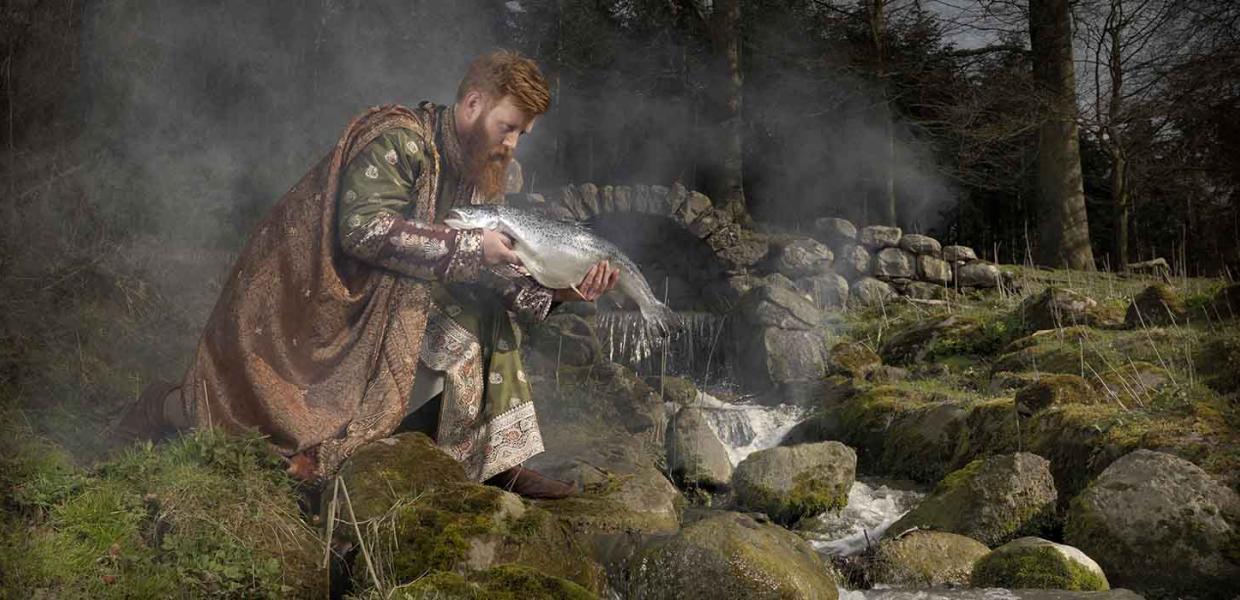
©Jim LyngvildPhoto:Jim Lyngvild
Thor Catches Loki
Once, when Loki had really made the gods angry, he fled to a river and transformed himself into a salmon. But Thor had figured him out and caught him by the tail. That is why salmon have such narrow tails.
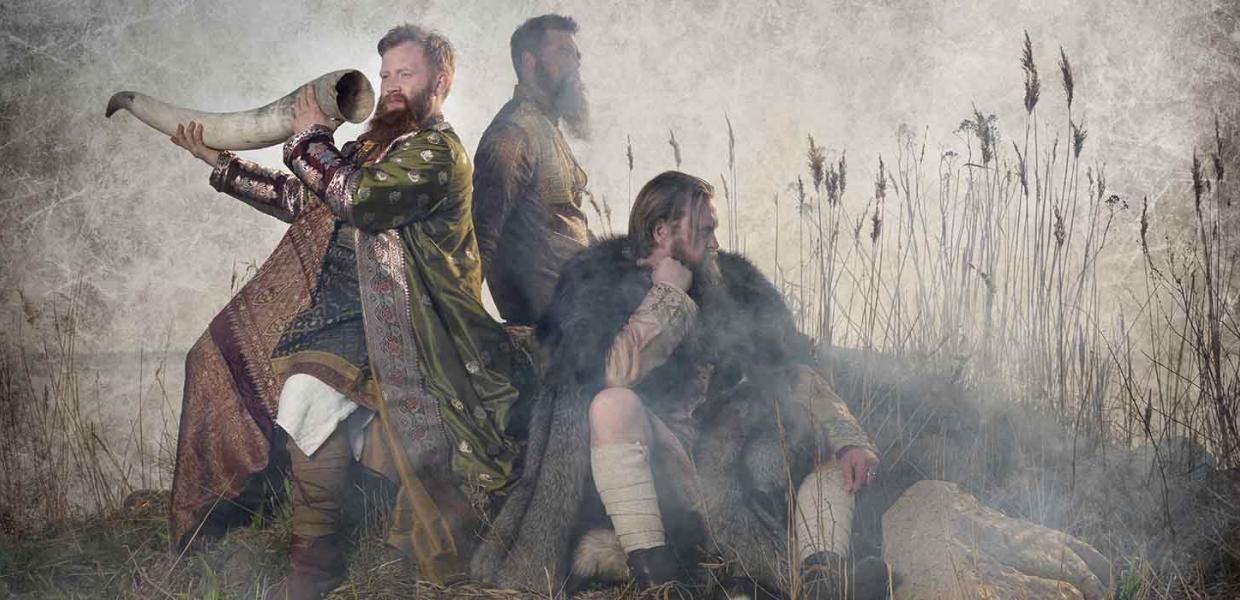
©Jim LyngvildPhoto:Jim Lyngvild
Thor in Útgarðr
When Thor once was to go to Útgarðr, he was welcomed by Útgarða-Loki. He wanted to compete over who was the strongest, and Thor was, among other things, asked to empty Útgarða-Loki's horn. The horn was connected to the sea, so Thor could not empty it.
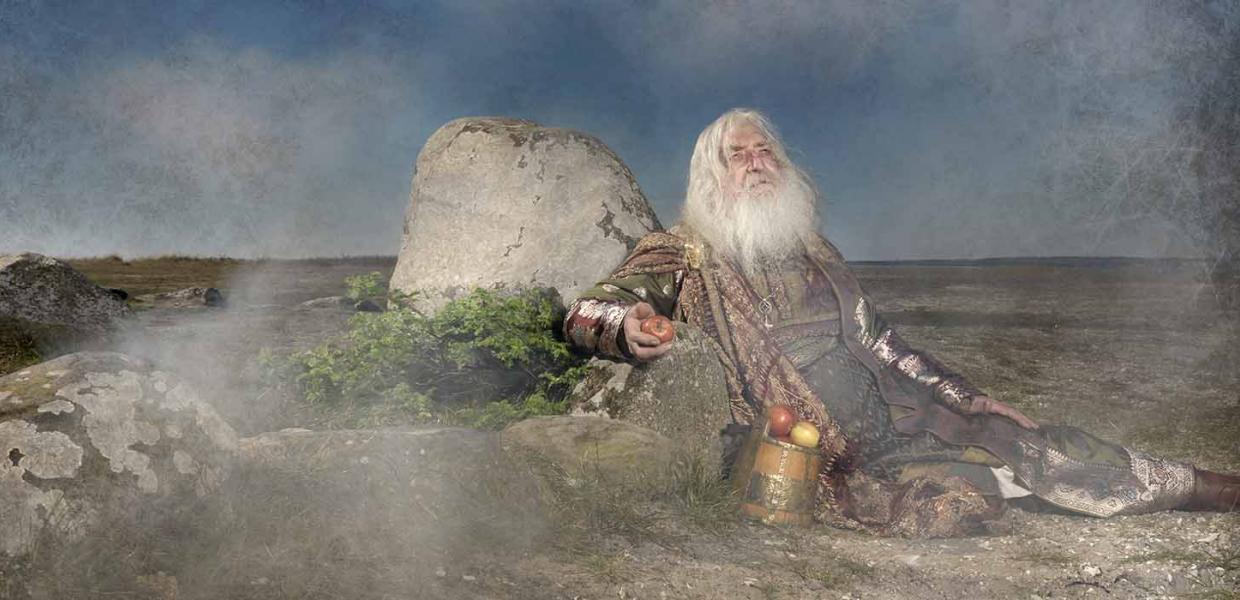
©Jim LyngvildPhoto:Jim Lyngvild
Old Thor
When Idun was once abducted by Loki, and the gods' apples of youth were thus missing, the gods languished. Here we see Thor, who has not received his apples, and therefore has turned into a white-haired old man.
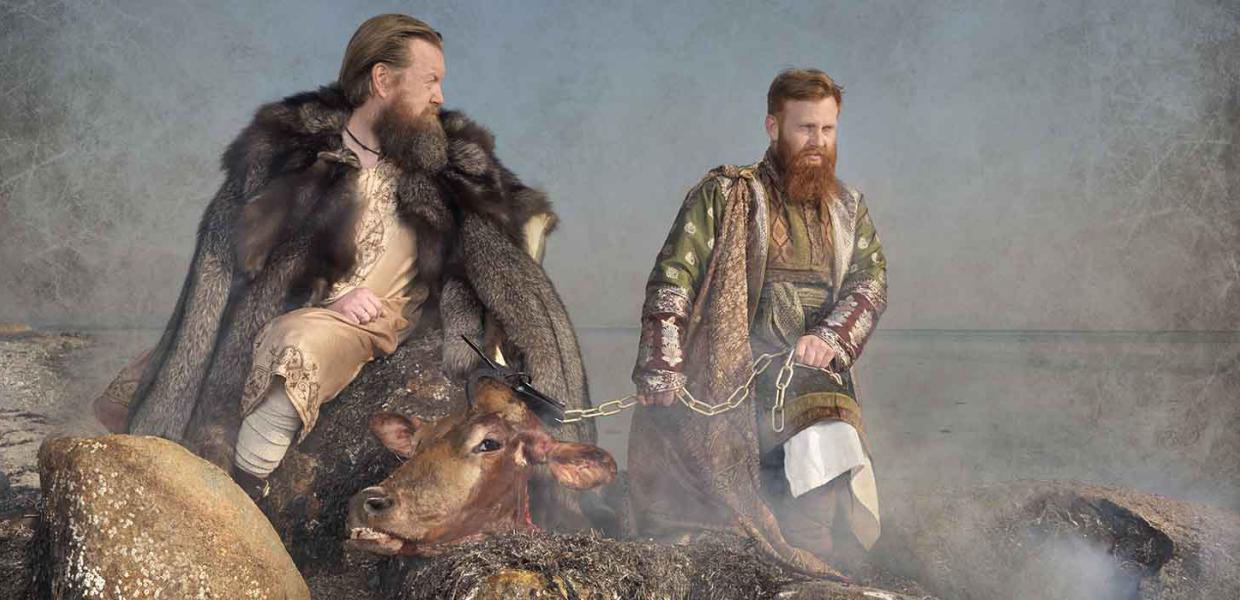
©Jim LyngvildPhoto:Jim Lyngvild
Thor Goes Fishing
Thor once took the giant Hymer on a fishing trip. He wanted to catch the Midgard Serpent and had chopped off the head of Hymer's favorite bull and used an anchor as a hook. He got the serpent on the hook, but Hymer cut the line, and the serpent disappeared back into the depths.
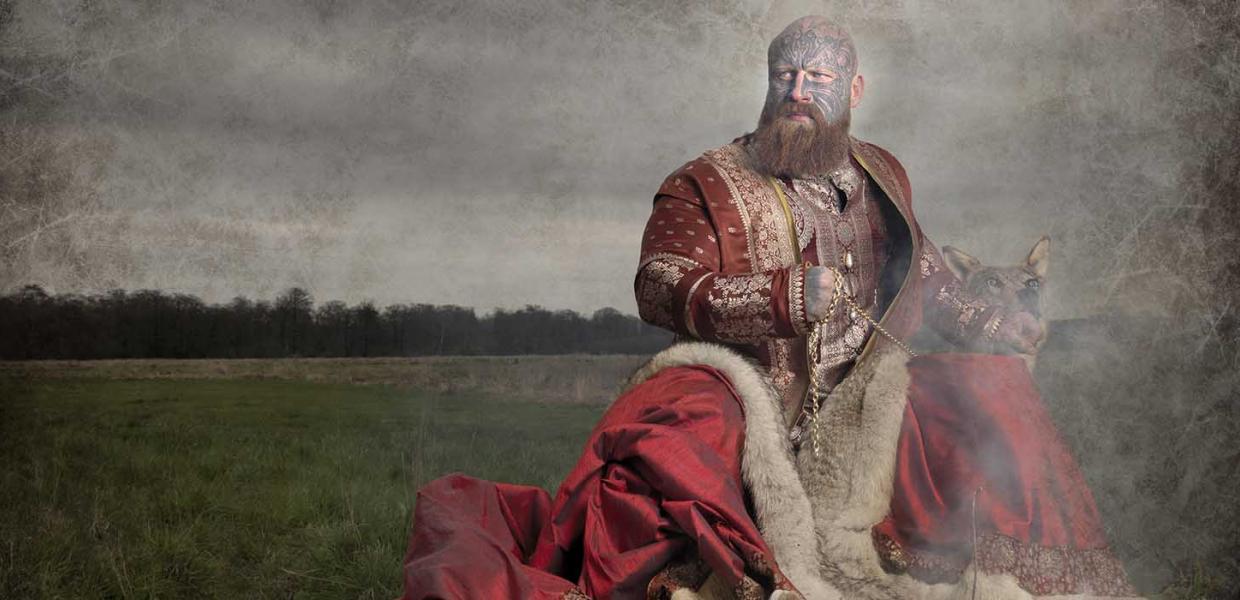
©Jim LyngvildPhoto:Jim Lyngvild
Tyr
The god Tyr is the god of battle. He has only one hand because he once bound the Fenris wolf with the dwarves' chain, Gleipnir. When the wolf realized it was being tricked, it asked Tyr to lay his hand in its mouth, and as the chain was tightened, Tyr lost a hand. But the chain held – until Ragnarok.
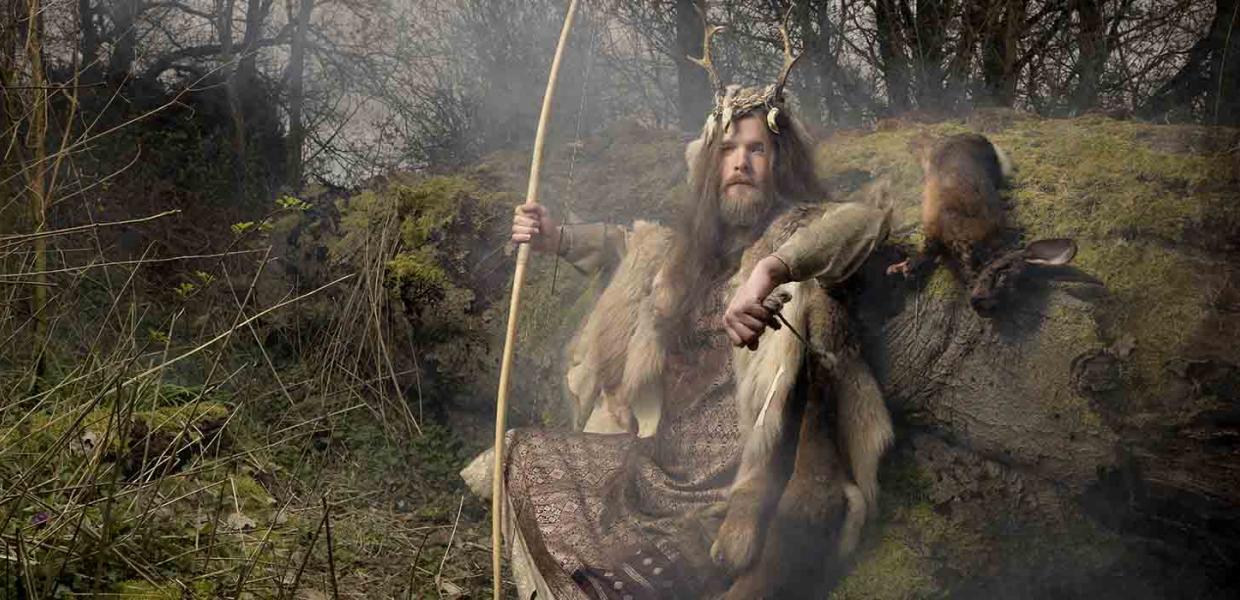
©Jim LyngvildPhoto:Jim Lyngvild
Ullr
Ullr is the god of skiing and hunting. He lives in Ýdalir, which means Yew Valley (like the tree). Ullr is good to sacrifice to if one is going hunting, and here he is seen with two hares he has just caught. Ullr's mother is Thor's wife Sif, but Thor is not his father.